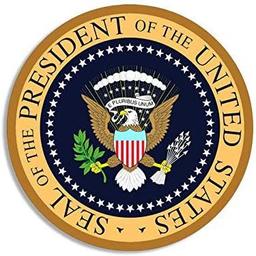
Article II - Foreign Policy (pp. 124-126) and Electoral College
Quiz by Kevin Burkwit
Feel free to use or edit a copy
includes Teacher and Student dashboards
Measure skillsfrom any curriculum
Measure skills
from any curriculum
Tag the questions with any skills you have. Your dashboard will track each student's mastery of each skill.
With a free account, teachers can
- edit the questions
- save a copy for later
- start a class game
- automatically assign follow-up activities based on students’ scores
- assign as homework
- share a link with colleagues
- print as a bubble sheet
20 questions
Show answers
- Q1Which of the following terms describes how a country deals with other countries?domestic securitydomestic policynational securityforeign policy30s
- Q2Which of the following is NOT a goal of conducting foreign policy?promote world peaceensure American roads and highways are safeencourage trade with other countriesadvance democracy around the world30s
- Q3Which of the following executive agencies is the LEAST likely to help the president make and carry out foreign policy?Department of the TreasuryDepartment of StateNational Security CouncilDepartment of Defense30s
- Q4Which of the following is NOT an example of how Congress plays a part in foreign policy?as Commander-in-Chief, can send troops around the worldhas the power to decide how much money the country should spend on defensecan declare warcan block some military actions30s
- Q5What parts of government are involved in making treaties with other nations?The Senate makes treaties, but the Supreme Court must approve the treaty.The Senate makes treaties, but the President must approve the treaty.The President makes treaties, but the House of Representatives must approve the treaty.The President makes treaties, but the Senate must approve the treaty.30s
- Q6Which of the following is the MOST peaceful foreign policy tool?embargomilitary forceexecutive agreementtrade sanctions30s
- Q7What parts of government are involved in picking our ambassadors who represent the U.S. government in other countries?The Senate appoints ambassadors, but the appointments need to be confirmed by the Supreme Court.The President appoints ambassadors, but the appointments need to be confirmed by the House of Representatives.The President appoints ambassadors, but the appointments need to be confirmed by the Senate.The Senate appoints ambassadors, but the appointments need to be confirmed by the President.30s
- Q8The Marshall Plan, which was a program that helped Western Europe rebuild after World War II, is one of the U.S.'s greatest examples of...trade sanctions.an embargo.foreign aid.military force.30s
- Q9The last option when dealing with other countries should be...foreign aid.an embargo.trade sanctions.military force.30s
- Q10Helping a country with money, food, military assistance, or supplies is an example of...a treaty.an embargo.trade sanctions.foreign aid.30s
- Q11Whose votes directly elect the President?the registered voters in the United Statesthe Congressmen in the U.S. House of Representativesthe Senators in the U.S. Senatethe electors in the Electoral College30s
- Q12In order to win the presidential election, a candidate needs to receive...a majority of the electoral votes.a majority of the popular vote.half of the popular vote.half of the electoral votes.30s
- Q13Each of the following describes why California has more electoral votes than Florida EXCEPT...California has more U.S. Senators than Florida.California has more Representatives in the U.S. House of Representatives than Florida.California has a bigger population than Florida.California has more elected officials in the U.S. Congress than Florida.30s
- Q14When registered voters go out on Election Day and vote for the candidate they want to win, the total number of those votes is called...the "allocation" method.the popular vote.the Electoral College.electoral votes.30s
- Q15What is the smallest number of electoral votes a state could have?241330s